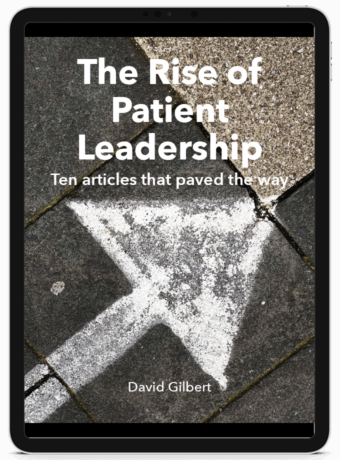The Hedgehog - What happens when policy making is driven by fear
“The health service has been prone to operating a ‘factory’ model of care and repair, with limited engagement with the wider community, a short sighted approach to partnerships… We have not fully harnessed the renewable energy represented by patients and communities…” The Five Year Forward View.
___
You’re a hedgehog. Sometimes when you are scared, you huddle into a ball. If you are afraid of having difficult conversations, anxious about the future, you speculate… The fantasies in your head about what will happen are largely built on assumptions about how things have gone in the past. And you assume the worst.
NHS leaders are hedgehogs. Ordered by chief hedgehog, Simon Stevens and NHS England to ‘get a grip’ on resources and how local healthcare will be delivered in hard times, Simon has ordered all his little hedgehogs to huddle together to draft Secret Transformation Plans (STPs). Patients, carers, communities, citizens have been excluded.
OK, let’s drop the metaphors
Yesterday, in a surreal moment for the NHS, NHS England published ‘guidance’ about how they ‘expect’ (is that a requirement? Is that a ‘it would be nice if?’) local organisations to engage ‘meaningfully’ in conversations with patient, carers, communities and citizens about STPs.
This is a long long time since the beginning of Secret Transformation Plan discussions about how your money will be spent (and perhaps which hospitals may close and what services may be rationed, sorry, ‘re-prioritised’).
I know how this works. Someone, probably a low paid patient and public involvement team alongside the deputy communications manager will be asked to stay late to design some sort of strategy for ‘consulting’ with the public. They will be asked to get legal advice on what counts as ‘statutory consultation’.
The enthusiasts will put in phrases about how they will hold ‘deliberative’ discussions with ‘key stakeholders’ about the options – they will go to and fro to the Chief Executive office to ask how the hell they can do this with a straight face, when their bosses have been holed up behind closed doors for the last year with other organisations (whose governance structures are foreign to the PPI lead).
They will be told to phone the other poor PPI leads and Comms teams across the patch and will come up with some sort of patchwork quilt of STP roadshows, events, surveys and focus groups (though I am not sure where all the money for this is going to come from – but perhaps there's a bit left over from the Comms budget that can be 're-allocated' from the planned community resource fund and maybe KPMG can help?)
And this will be a charade. The real discussions and deliberations have been going on between people of power for months and months. Many of the real decisions will already have been made. But we don’t know that for certain actually – because, well… Nobody has told us.
This is what happens when policy making is driven by fear.
My hunch is this:
Top managers have been told that this stuff is very contentious. That, while patients and communities are ("of course") important, that this is too difficult to talk about openly. If it "gets out" that this or that hospital is under threat, God forbid.
Past experience has shown them that the usual methods of engagement (focus groups or representative structures) have not worked when it comes to deciding on priorities – that the mud slingers and ‘trouble makers’ or the insultingly labelled ‘usual suspects’ will rock up to public events and make trouble (alongside their mates in the media and pet local councillors).
Based on false assumptions about how engagement could work, they think it better to hide any potential bad news. Distrusting their local populations and patients – seeing them as children unable to hold insights into resources issues and how their money might be spent or without ideas on novel ways to organise things, they have locked themselves into dark rooms.
A guardian article recently said that STP Board members have been ‘prevented’ from discussing plans with the public and/or in public. There has been little detail of how patients and communities have been engaged. In another article, defending a STP’s engagement, a local spokesman said they had ‘also had discussions with’ the local HealthWatch. What does that really mean? Nobody will tell us. Great if it's happening properly. Hats off to the hard working, underpaid and undervalued HW teams and members (volunteers remember). But it is NOT happening across the country.
What I want to know and have been unable to find out is: who is at the table? Are patients, carers, communities and citizens at the decision-making table – are they part of deciding which options go forward? Have they been in positions of influence. Where were the plans to engage from the beginning – Why wasn’t Simon Stevens brave enough to push for the promises of the Five Year Forward View re community engagement?
I think he was scared. And because engagement tools are not fit for purpose. And because those approaches have not led to people seeing the benefits. That has suited those in power as they have buffered change. But now we really do need partnerships. And patients could help. If we had been five years further on, there would have been confidence in new ways of doing things and new ways of holding difficult conversations about resource decisions.
I am sure there are some brave local CCGs, for example, that have bucked the trend, that will fight all the way for decent involvement. Good on them! I hear of some decent work going on to involve patients in designing pathways for particular conditions. But the tragedy is that these are the exceptions, rather than the norm. And I fear that the results of these condition specific initiatives will be ‘fed into’ STPs. But that without patients as partners in positions of influence, the implementation of these findings will dilute further up the food chain.
We’ve been here before. Where were patients and communities in the car crash Lansley Reforms? Or in Kelsey’s nightmare care.data. Or in the Junior Doc dispute? And now STPs? Nowhere.
Even National Voices has criticised the state of play: "Public engagement in the STP process got off to a poor start. Too much planning has been behind closed doors. Now local planners need to make up lost ground, mend damaged trust and engage with local people, communities and voluntary organisations"
This is a remarkable statement. Remember that this comes from the organisation headed by Jeremy Taylor. Jeremy is also Chair of the People and Communities Board for the NHS England Vanguard work. There is no-one better placed, in my opinion, to have an informed view of patient and public engagement in national policy making. And I know how hard NV works to be constructive and supportive. So, this statement I see as a real warning of problems ahead.
I can be a little more forthright!
We have come a long way in seeing the value of patients as partners in self-management and shared decision making; also in local quality improvement work (witness the rise of co-production approaches and experience based co-design) and community development; in patient leadership ideas and, to some extent local governance (witness me being appointed as a Patient Director).
However, when it comes to patients as partners in policy making….? Zilch.
NHS England will claim that guidance on involvement now stresses the importance of STP leaders engaging with patients and communities. But it is too little, too late. The die has been cast, the horse has bolted, the footprints printed… (insert favourite metaphor here). And what’s worse, is that poor dedicated involvement and comms leads – some of them my good friends - will take the rap. I’m even wondering whether I may get a call to help a local STP out. God help me.
There is a disaster waiting to happen. Patients and communities are not stupid. They will see how they have been locked out of policy making. And I can almost hear the sound of placards being built. And imagine the phone calls to lawyers about judicial reviews. This is what happens when policy is driven by fear, driven also by a history of poor engagement that has further fueled erroneous assumptions.
One final thought. Doctors used to fear breaking bad news. Medicine, shrouded in secrecy, fixed on certainty, thought that trust was engendered by being reassuring, and dealing in 100% black and white medicine. It’s safe or it’s not.
Medicine and healthcare professionals have changed. I trusted my GP this morning about my drugs because he was honest and shared the benefits and risks of treatment. We had a difficult conversation and treated each other like adults. Simon needs to learn and put his 5YFV rhetoric into practice.
Because you know what happens to hedgehogs when they curl up in the middle of the road…
© David Gilbert 2016
See my other blogs at www.futurepatientblog.com
.


Thank you an awful lot I thought I was a lone voice in the wilderness when I got up to ask these very Questions at the main stage presentations that mentioned STP's I asked 3 questions about Patient Involvement in STP's and Cancer Alliances and just got Corporate spin answers . I also got the Local Healthwatch answer of them being involved . If they are involved are they sworn to secrecy as well because I haven't seen them post anything on their website . I am a foundation trust Governor and haven't heard anything . I sent 3 questions to our Health and Wellbeing board about our local STP and Patient involvement .Our local hospital CEO brushed me off with 5 minutes of gibberish and I had no right of reply and they took the STP in part 2 of the Meeting after I was asked to leave . I sent 4 Questions to my local CCG Governors Meeting Yesterday . I couldn't go because it was one of my Companies AGM and I had to be there . I asked for a written reply and got it yesterday afternoon . It was a duplicate word for word of the first page of the NHS England December 2015 Guidance for STP footprints on engaging with the Public which I had sent the CCG in June before they had to send in their initial statement on STP . I will send them yesterdays new Guidance from my email address so they know I know about it and see what happens . Have to stop now I have a headache and I am nearly 70 . By the way I had to pay my own way to get to expo £114 for my tickets £35-20 for rail £26 for taxi's and £15 for refreshments .. Most of the paid NHS Staff got in for nothing .Each CCG got an allocation of Tickets but I am the patient bad boy who wont stay silent so pay for yourself
You're not alone. This is a buggy I think. Keep asking those questions!